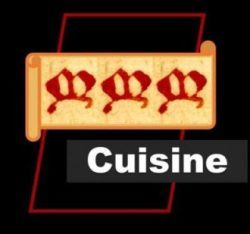
I love this time of year: late spring. My strawberries are just beginning to ripen — I’m going to have a fully ripe strawberry in May for the first time in about 10 years! My patio raspberries are being visited by many a bumblebee — I have quite a small garden, so dwarf fruit bushes and trees suitable for pots work well. And my patio cherry is going to yield up fruit for the first time since I bought it three years ago. Not quite self-sustainable, but hey, I’m trying!

Now, I’ve known for a while that strawberries and cherries were grown in medieval gardens in Britain: ‘strowberys’ (the wild native plant, Fragaria vesca, not the modern cultivars) appear in the fifteenth-century poetic treatise on gardening by the aptly named ‘Mayster Ion Gardener’; and ‘Chyrys’ is a recipe in Richard II’s cookery book, Forme of Cury (c.1390). But I hadn’t realised there was evidence for raspberries being a medieval garden crop. In fact, to my shame, I hadn’t realised raspberries are native to Britain!
Video: © Christopher Monk 2020.
The evidence came to me from archaeology. I was flicking through a new book purchase, Food in Medieval England: Diet and Nutrution, attempting to ease myself back gently into academic research, when I spotted a table showing ‘Fruits and nuts from selected sites, mostly pre-1500’ and noticed that raspberry (Rubus idaeus) was indicated for Beverley, Eastgate (northern England); Bristol, Redcliffe Backs (southern England); and Paisley Abbey (southern Scotland). Wonderful , I thought.
Why though hadn’t I seen raspberries mentioned in medieval literature? OK, I haven’t read everything, but since I’ve been researching medieval food this past year, I thought I might have stumbled across a reference to them somewhere. The answer is, the raspberry was known in medieval times as the ‘hindberry’!
‘Hindberry’ appears, in the very late Old English form hindberge (roughly pronounced hind-ber-ye), in an early twelfth-century glossary of plant names in Durham Cathedral (MS Hunter 100), glossing Latin ermigio. And, after a little digging, I also found it in an even older text, Lacnunga (meaning ‘remedies’), which dates to about the year 1000; there it survives in the Old English form hind-brer in a long list of plants for a ‘holy salve’.
Stephen Pollington, in his excellent work Leechcraft, informs us that ‘hindberry’ still survives as an alternative name. So please do let me know if you refer to raspberries as hindberries in your part of the world.
In the meantime, here are a few more pics from my garden:


Works consulted:
A Fifteenth-Century Treatise on Gardening. By “Mayster Ion Gardener.”, ed. Alicia Amherst, Archaeologia 14 (1894), pp. 157-172; ‘strowberys’ mentioned at p. 166, line 175.
Middle English Dictionary (online), hind(e, 1 (d) ~berie.
L. Moffett, ‘The Archaeology of Medieval Plant Foods’, in Food in Medieval England: Diet and Nutrition, ed. C. M. Woolgar, D. Serjeantson, and T. Waldron (Oxford University Press, 2011), pp. 41-55; Table 4.2 at p. 46.
Stephen Pollington, Leechcraft: Early English Charms, Plantlore, and Healing (Anglo-Saxon Books, 2000), pp. 128, 196-97, no. 63.


Fascinating, as always. What does “glossing Latin ermigio” mean?
LikeLiked by 1 person
It means the Old English word for raspberry is given as the equivalent to the Latin word for raspberry (actually a medieval Latin variant, not the classical Latin word, which I’ve forgotten). I should have explained this. Sorry!
LikeLiked by 1 person
Thanks!
LikeLike
Welcome!
LikeLike
From now on I shall call them Hindberries ! 🙂
LikeLiked by 1 person
Me too!
LikeLike